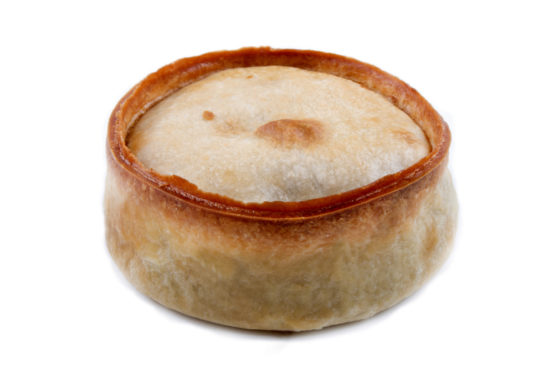
This coming week marks National Pie Week – and who doesn’t love a pie?
To celebrate, we’ve got eight fun facts about your favourite treat to tantalise your tastebuds in the run up to the big week.
From the Killie Pie to Desperate Dan’s Cow Pie, we’ve got it covered…
Did you know?
1. The Forfar bridie is the cause of much controversy
The origin of the name ‘bridie’ has caused tongues to wag.
Saddler’s Bakery claims the pie was named after Maggie Bridie, who distributed the pies to local farmer’s markets.
But others claim the pie was named due to being a culinary treat saved for special occasions such as weddings – hence bridies.
That would also explain the horse-shoe shape for good luck.
2. Pie has been around since Egyptian Times
The definition of a pie is a baked dish which is usually made of a dough casing that covers or completely contains a filling of various sweet or savoury ingredients.
This means lots of things qualify as pies, including mixed fruit pies in North America served with a dollop of ice cream.
They’re known as Pie a la mode, because ice cream was trendy at the time.
3. All around the world there are competitions for unusual pies
These include the annual Strange Pie Contest in California and the World Championship Scottish Pie Awards In November.
In California they came up with ‘Pickle and Peanut Butter pie’, and ‘The Club pie’ (that’s French fries, bacon, and mayonnaise), and the ‘Candied Peppers and Chocolate pie’.
We’re sure they’re delicious!
4. Pies are even eaten in North India
There is a traditional slow cooking technique called the Dum Puhkt (careful how you pronounce that) which started in the royal kitchens of the Awadh region in India and the words “dum” and “pukht” mean to breathe and to cook, respectively.
This technique involves placing the food in a heavy-bottomed brass or clay pot called a handi, sealing it tightly with dough and cooking it over a low flame.
Glasgow’s Dhabba restaurant in the Merchant City even has a special section dedicated to this gastronomic dish.

5. Scotch pies are also known as mutton pies
They also used to be frowned upon by the Scottish church who viewed them as luxurious, decadent English-style food in the Middle Ages.
Ironically they proved to be the ideal food for working men and women who bought them from pie-men or pie-wives in the city streets centuries later.
The space on top of the pie, created by the raised crust, would sometimes be filled with gravy, beans or mashed potato.
6. In Roman times the pie’s pastry shell was designed to be used as a baking dish
It was also intended as a storage container, and a way to serve the filling.
Records show that Romans would use meats, oysters, mussels and fish as the filling and a mixture of flour, oil and water to keep it all in place.
Unlike these days where we munch everything, the pastry was often tough and inedible and designed to be put in the bin.
7. In 16th century England “surprise pies” featured live animals inside
The animals would jump out at posh dinner parties and included frogs, squirrels, foxes and even “four-and-twenty blackbirds.”
At one dinner attended by Charles I, they say a huge pie was placed on the table and when the crust was removed, a dwarf jumped out from the pie!
We don’t think he was eaten.
8. Two of Shakespeare’s characters met their death through a pie
Out of 74 scripted deaths throughout his 38 plays there were plenty of stabbings, poisonings and beheadings.
In Titus Andronicus (Shakespeare’s first tragedy), Titus Andronicus wreaks revenge on Queen Tamora and her family for their evil deeds by baking her sons into a pie and serving it to her.

Enjoy the convenience of having The Sunday Post delivered as a digital ePaper straight to your smartphone, tablet or computer.
Subscribe for only £5.49 a month and enjoy all the benefits of the printed paper as a digital replica.
Subscribe